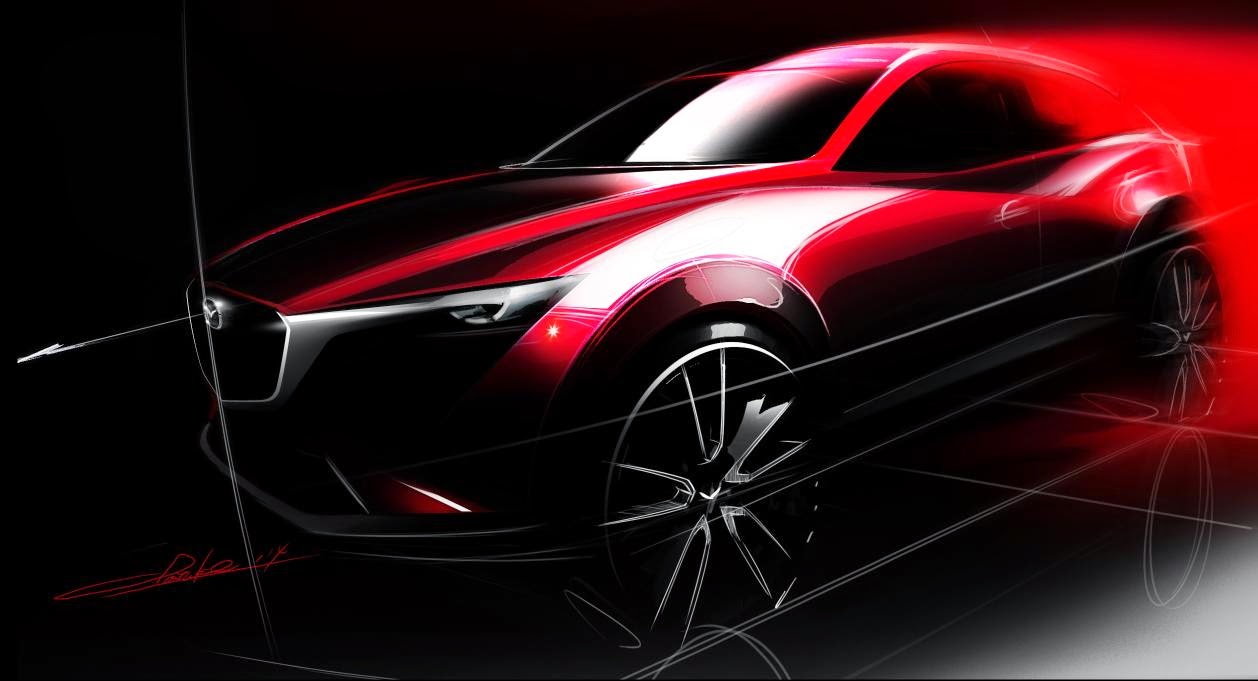Japanese automakers first inroads to the North American marketplace around half a century ago depended upon smaller vehicles. While Toyota and Honda allowed vehicles in their line-up to bloat to capacities suiting large-thinking tastes east of the Pacific Ocean, Mazda remains centered on being a big player of mainly compact vehicles. Mazda will again remind the world how big things come in small packages with the world premiere of a new compact crossover vehicle.
Detailing the appearance of the Mazda CX-3, the continuing fostering of KODO design language is teased in a sketch the automaker provided. Vertically aligned grille, sweptback headlamps and pronounced side curves exhibited on the CX-3 design could foretell the arrival of Mazda's boldest styled crossover. Whether the teaser image is largely accurate or an embellishment will be unveiled on November 19th at the Staples Center in Los Angeles.
Making its global debut at the 2014 Los Angeles Auto Show, the Mazda CX-3 enters below the existing CX-5 and CX-9 in scale as a new compact crossover. The vehicle will become the newest member of a growing group of smaller urban utility products. Direct competition to what will be the CX-3, The Chevrolet Trax and Honda HR-V are a few nameplates recently spawned in North America to attract a new entry-level crowd. When Mazda exposes their latest compact crossover in sheetmetal form, expect to hear mentions of SkyActiv technology and a potential retail price below $20,000 US.
Following the unveiling to the press, the first members of the public can view the Mazda CX-3 between November 21st and 30th at the 2014 LA Auto Show. Mazda's Los Angeles presence will also include the 2016 MX-5 as well as has updated models of the Mazda6 and the CX-5. Causing a stir earlier this year with the much-anticipated reinvention of the MX-5 sports car, Mazda has been teaching us in 2014 how great it can be to think small.


Comments
Post a Comment